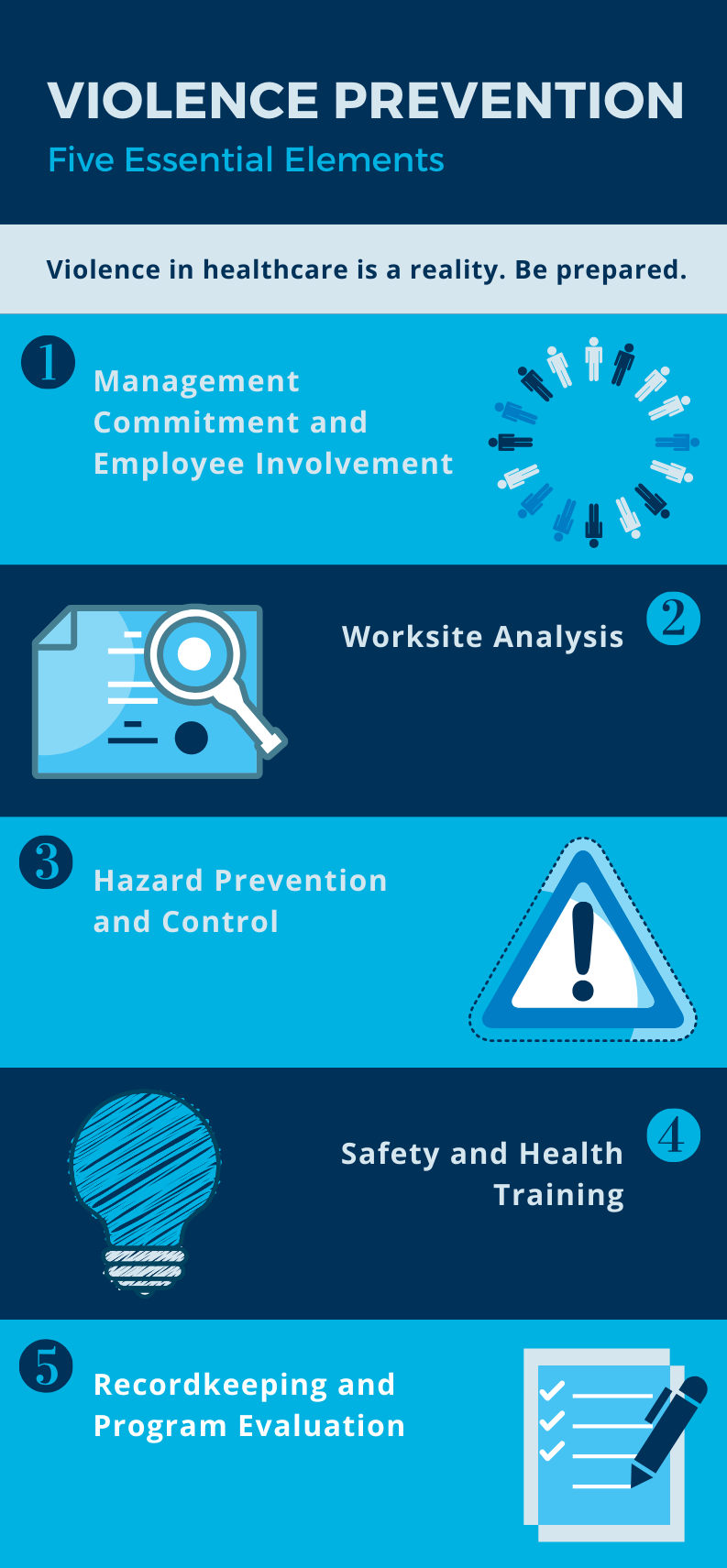Exactly how to Establish a Robust California Workplace Violence Prevention Plan for Your Service
Exactly how to Establish a Robust California Workplace Violence Prevention Plan for Your Service
Blog Article
The Duty of Employee Training and Understanding in Enhancing Work Environment Violence Avoidance Initiatives Across Numerous Industries
The integration of worker training and understanding into work environment violence avoidance efforts is progressively acknowledged as a fundamental aspect of business safety and security across varied industries. By executing targeted training programs, organizations can properly equip their workforce to identify and attend to possible hazards before they rise. However, the effectiveness of these initiatives typically pivots on several important variables that vary by industry, raising crucial questions regarding the adaptability of training approaches and their real-world effect. Understanding these nuances may reveal techniques that can substantially boost safety and security protocols and worker confidence in risky atmospheres.
Significance of Training Programs
In today's vibrant work atmosphere, the significance of training programs can not be overstated, especially in the context of workplace physical violence avoidance. These programs offer as a foundational aspect in cultivating a protected and safe workplace culture. By equipping workers with the understanding and skills needed to identify, mitigate, and react to possible hazards, organizations can cultivate a setting that focuses on safety and security and well-being.
Reliable training programs do even more than simply instruct; they empower workers to recognize indication of violence, comprehend the procedures for reporting incidents, and create approaches to de-escalate prospective problems. They instill a sense of cumulative responsibility among personnel, encouraging proactive involvement in keeping a secure office.
Financial investment in training not just boosts staff member recognition yet likewise demonstrates an organization's commitment to safeguarding its labor force. This positive approach can lead to minimized occurrences of work environment violence, reduced absenteeism, and improved staff member spirits. Ultimately, comprehensive training programs are indispensable to developing a resilient organizational society that values safety and security and advertises a healthy workplace, therefore lowering the danger of violence and its associated consequences.
Trick Elements of Effective Awareness
A thorough recognition program includes several crucial components that are vital for successfully preventing work environment violence. Clear communication of procedures and plans associated to workplace physical violence is important. Staff members have to be notified concerning the organization's position on physical violence and the certain protocols in area for reporting occurrences.
2nd, training sessions ought to incorporate reasonable scenarios that employees may encounter. This useful strategy aids employees recognize cautioning indications of potential physical violence and outfits them with the needed abilities to de-escalate tense circumstances. Third, promoting a helpful office society is important; workers must feel empowered to speak out without concern of revenge.
In addition, recurring education and learning is very important to maintain understanding fresh and pertinent. Regular correspondence course and updates on arising dangers can enhance employees' alertness and preparedness. Integrating responses devices allows staff members to share their experiences and insights, which can lead to continuous improvement of understanding campaigns. By integrating these parts, organizations can produce a durable structure for preventing office physical violence, ultimately adding to a more secure and extra efficient setting for all employees.
Industry-Specific Training Approaches
Efficient office physical violence prevention training have to be customized to the distinct difficulties and threats dealt with by particular markets. For instance, healthcare settings require training that attends to the high likelihood of encounters with aggressive individuals or site visitors. Programs need to concentrate on de-escalation strategies, acknowledging caution indications of potential physical violence, and guaranteeing team recognize the importance of reporting occurrences.
On the other hand, retail settings might face various threats, such as break-in or customer conflicts. Training in these environments must highlight situational recognition, reaction methods during emergency situations, and the importance of protecting cash money and valuables.
Manufacturing and building sectors present their very own threats, typically associated with interpersonal disputes or risky working problems. Training in these industries must consist of strategies for dispute resolution, advertising a society of safety, and motivating open communication among staff members.
In addition, corporate offices might call for training fixated avoiding harassment and intimidation, cultivating a considerate workplace culture, and executing clear coverage devices. Each sector needs to not just identify its specific vulnerabilities but also adapt training materials to resonate with the labor force effectively, guaranteeing that workers feel equipped and equipped to manage prospective fierce circumstances.
Determining Training Efficiency
Examining the effect of work environment physical violence prevention training is vital for making sure that employees are appropriately prepared to take care of possible dangers. To precisely determine training effectiveness, companies must implement both qualitative and quantitative analysis techniques. Pre- and post-training surveys can evaluate changes in staff member understanding, attitudes, and behaviors worrying work environment violence. These surveys need to concentrate on particular training objectives to make certain alignment with the company's objectives.
In addition, functional assessments, such as role-playing situations or simulations, can provide understandings right into how well workers apply discovered abilities in real-life circumstances. Keeping track of case reports before and after training can additionally work as a sign of performance, as a reduction in occurrences may show better employee readiness.
Moreover, responses from participants must be methodically collected to determine locations for improvement in training web content and delivery. Carrying out follow-up analyses at regular intervals aids receive awareness and strengthens training concepts with time - california workplace violence prevention. By employing a detailed strategy to gauging training effectiveness, organizations can ensure that their workplace violence avoidance efforts promote a more secure environment and enhance overall worker wellness
Structure a Society of Safety And Security

Educating plays a pivotal role in this cultural shift. Routine, detailed training sessions enlighten staff members concerning identifying warning signs of workplace violence and the appropriate responses. Encouraging open communication allows staff members to voice problems without anxiety of revenge, advertising cumulative obligation for safety and security.
Additionally, integrating safety into day-to-day procedures makes certain that it comes to be a shared worth as opposed to a simple compliance concern. This consists of routine security drills, updates on policies, and responses devices that include employees in safety and security conversations and improvements.
Ultimately, a durable culture of safety not just alleviates the risks of office physical violence but also improves employee spirits and efficiency. By fostering a setting where security is a fundamental top priority, organizations can develop resistant work environments that support both individual wellness and collective success.
Verdict
In final thought, employee training and recognition are crucial components in the avoidance of workplace physical violence throughout different sectors. Efficient training programs, customized to specific sector needs, improve employees' capability to recognize and respond to prospective hazards. By applying detailed recognition techniques and cultivating a culture of security, companies can considerably minimize incidents of office violence and enhance total staff member morale. Commitment to continuous training and evaluation guarantees continual performance and versatility in addressing emerging difficulties within the office setting.

Normal, thorough training sessions enlighten staff members concerning acknowledging caution indications of office violence and the proper responses.In final thought, worker training and awareness are essential components in the prevention of office physical violence throughout different markets.
Report this page